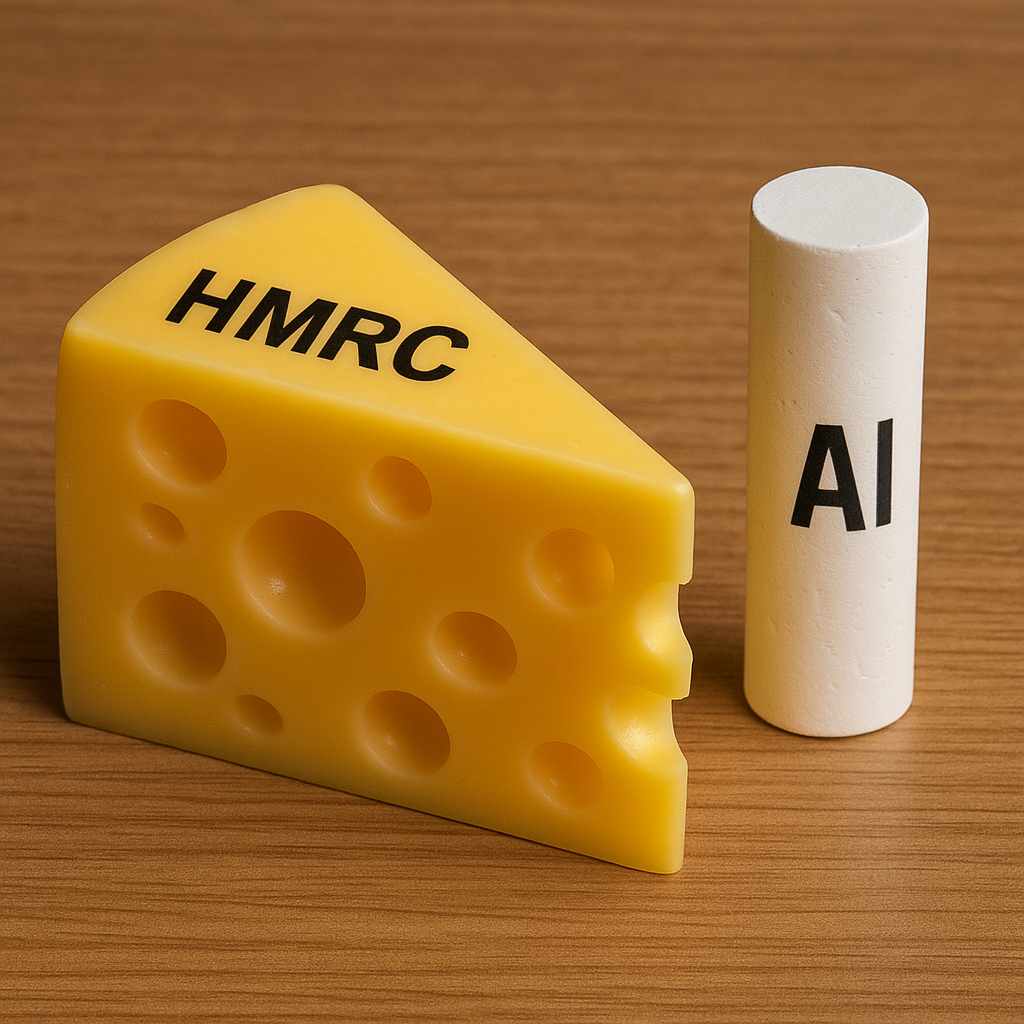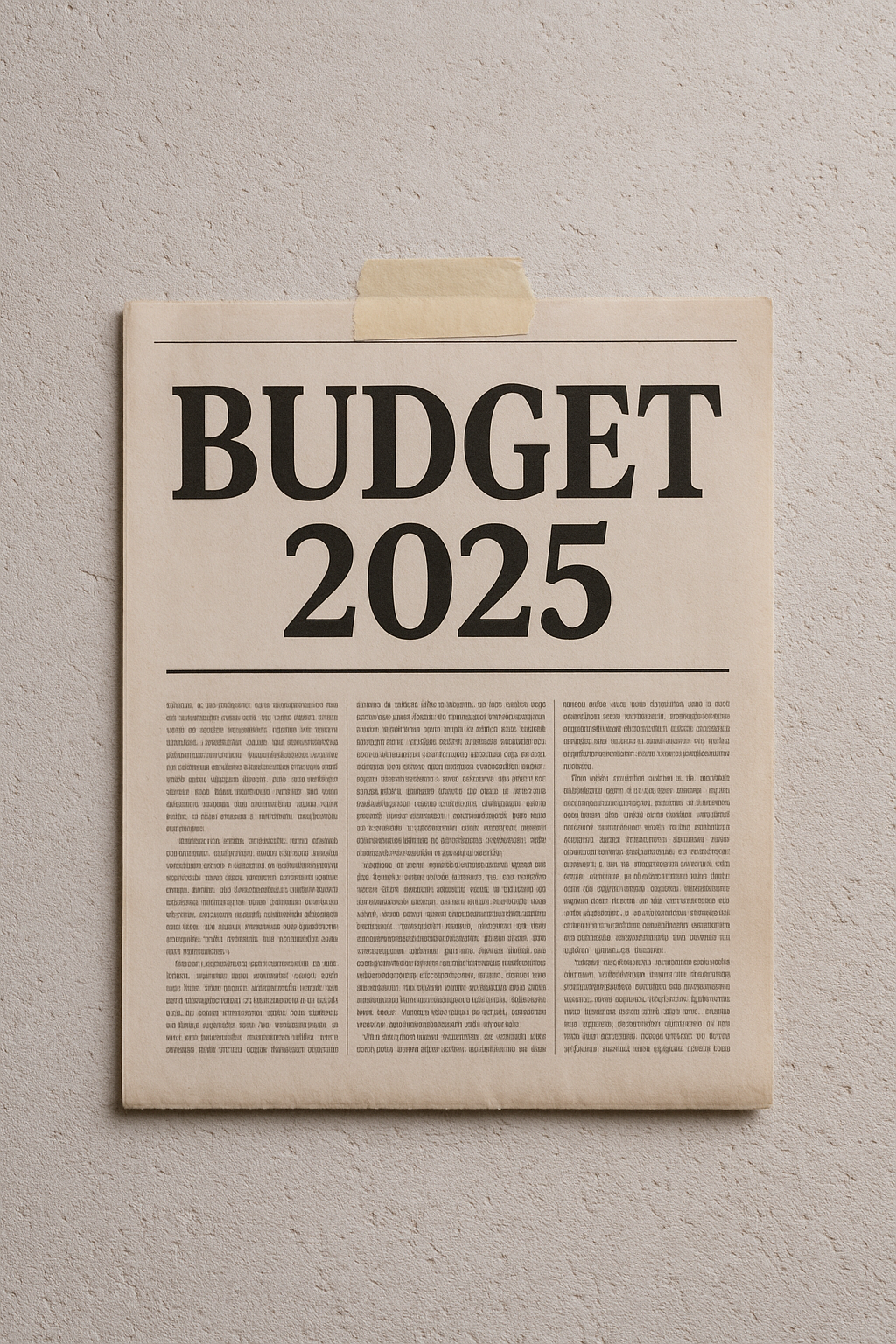HMRC and AI: Like Chalk and Cheese
When you think of artificial intelligence, you might imagine sleek systems solving complex problems, streamlining processes, and bringing the future into the present. When you think of HMRC… well, let’s just say that words like “streamlined” and “futuristic” aren’t usually the first to come to mind.
And yet, here we are. HMRC is using AI. What could possibly go wrong?

A Track Record That Inspires… Concern
Let’s rewind for a moment.
In recent years, HMRC has made headlines for all the wrong reasons. From mishandled letters demanding tax repayment from the dead, to long call centre waits that feel like a punishment for simply trying to be compliant, to real court cases where automated decisions were challenged successfully — it’s clear the taxman has struggled to get the basics right.
Now add AI into the mix — machine learning models, generative AI tools, predictive analytics — and the result feels less like progress and more like a recipe for disaster.
In theory, AI should help HMRC catch fraud, streamline admin, and save money. And we get it — that’s the dream. But in practice, giving HMRC a powerful new tool without bulletproof safeguards and legal clarity feels like handing a toddler a jet engine manual. You might get take-off… but you’re far more likely to get a smoking crater.
Automation Without Accountability?
A recent AccountingWEB article said that according to the OECD, 72% of tax authorities globally now use AI. But the smart ones are building safeguards, ethical frameworks, and justiciable protections before rolling out serious implementations. In the UK? Not so much.
While HMRC says it has internal frameworks and an AI ethics group, a closer look shows a concerning lack of tax-specific guidance. It’s one thing to publish a shiny AI framework. It’s quite another to make sure it works — especially when real taxpayers’ livelihoods are on the line.
Let’s not forget recent tribunal cases like F Harber v HMRC and B Zzaman v HMRC, where questionable decisions — possibly AI-assisted — led to taxpayer distress and legal battles. AI without explainability or accountability isn’t just a tech issue. It’s a trust issue.
So… What’s the Alternative?
It’s easy to criticise, but we also believe in solutions. That’s where Bots For That comes in.
Our AI agent, houbeanie, was designed with the accounting industry in mind — built not to replace humans, but to support them. Houbeanie works within your firm, not against it. It handles admin, repetitive tasks, and time-sapping to-dos, freeing up your team to focus on clients, strategy, and higher-value work.
We’re also developing new beanies constantly, including ones based around HMRC – so keep an eye out for that!
Our beanies are practical, grounded, and accountable — three things HMRC’s current AI approach struggles to offer.
Final Thoughts: A Square Peg in a Round (Tax) Hole
AI can be brilliant. But when it comes to HMRC, it feels like forcing a square peg into a round hole — at speed, and with no regard for splinters.
AI in tax administration could work, but not without real transparency, proper consultation, and mechanisms that prioritise people over processes. And honestly, until that happens, trusting HMRC to run on AI is… well, nonsense.
If you’re looking for AI that actually works — for you and not just some abstract government KPI — then let’s talk. At Bots For That, we’re building AI that fits your firm, your clients, and the way you work.




